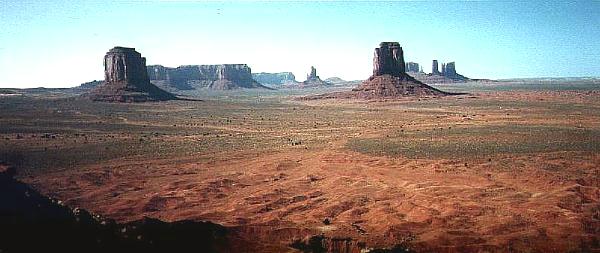- functional (sociological) dominance--sp. whose removal
causes greatest change in community
- e.g., Pearson (1942, Ecol. Monogr. 12:315-338),
investigated effects of grass spp., root depth, and
season of growth on ponderosa pine establishment
- Good competitors, acc. to Grime, have the following
characteristics:
- tall stature
- morphological adaptations
- opportunistic phenological growth pattern,
able to quickly exploit ppt. or sunlight when
it becomes available
- produce thick litter layer
- tall stature
- Competition, based on Grime's characteristics:
- largely ignores below-ground portion of plant
- indicates a species' ability to exert competition,
not withstand it
- is site-specific
- largely ignores below-ground portion of plant
- Nonetheless, Grime concludes that there is strong evidence that competitive exclusion is a causal factor in low species diversity
- Competition between plants is greatest in relatively
productive, stable habitats.
- The species that prevail in these habitats tend to
exhibit a suite of characteristics (e.g., tall stature,
rapid growth rates) which maximize the capture of
resources;
- this results in dominance over competitors.
- And these dominance relations are related to species diversity (number of species) of the site.
 (within-community) diversity
(within-community) diversity
- Problems w/ s:
- Depends on area sampled (i.e., comparisons between
communities require same sampling area)
- transformations can be used to minimize this problem:
- d = s/[log(area)]*, or
- d' = (s-1)/[log(area)]*, where
- d and d' represent rate at which spp. are added w/ increasing area
- *assumes areal sampling--w/ measures not based on
area, equivalent formulae are:
- d = s/[log(N)], or
- d' = (s-1)/[log(N)], where
- N = sample size
- d' = (s-1)/[log(N)], where
- Use of log(area) and log(N) assumes known logarithmic relationship between s and area or sample size
- d' = (s-1)/[log(area)]*, where
- transformations can be used to minimize this problem:
- May be vulnerable to high sampling variability (spp.
are not randomly distributed, esp. rare spp.)
- Can be affected by dominance relations
- e.g., the expected value of s, when sampling, is
dependent on total population size, number of species,
and sample size
- Given N=990, n=5, s=3 in 1:1:1 ratio (Ni=330
for all i):
- E(s) = 2.6 different species
- Given N=990, n=5, s=10, w/ N1=900 and
N2 = N3 =
N4 = ... = N10=10:
- E(s) = 1.4 different species
- Given N=990, n=5, s=3 in 1:1:1 ratio (Ni=330
for all i):
- e.g., the expected value of s, when sampling, is
dependent on total population size, number of species,
and sample size
- Depends on area sampled (i.e., comparisons between
communities require same sampling area)
